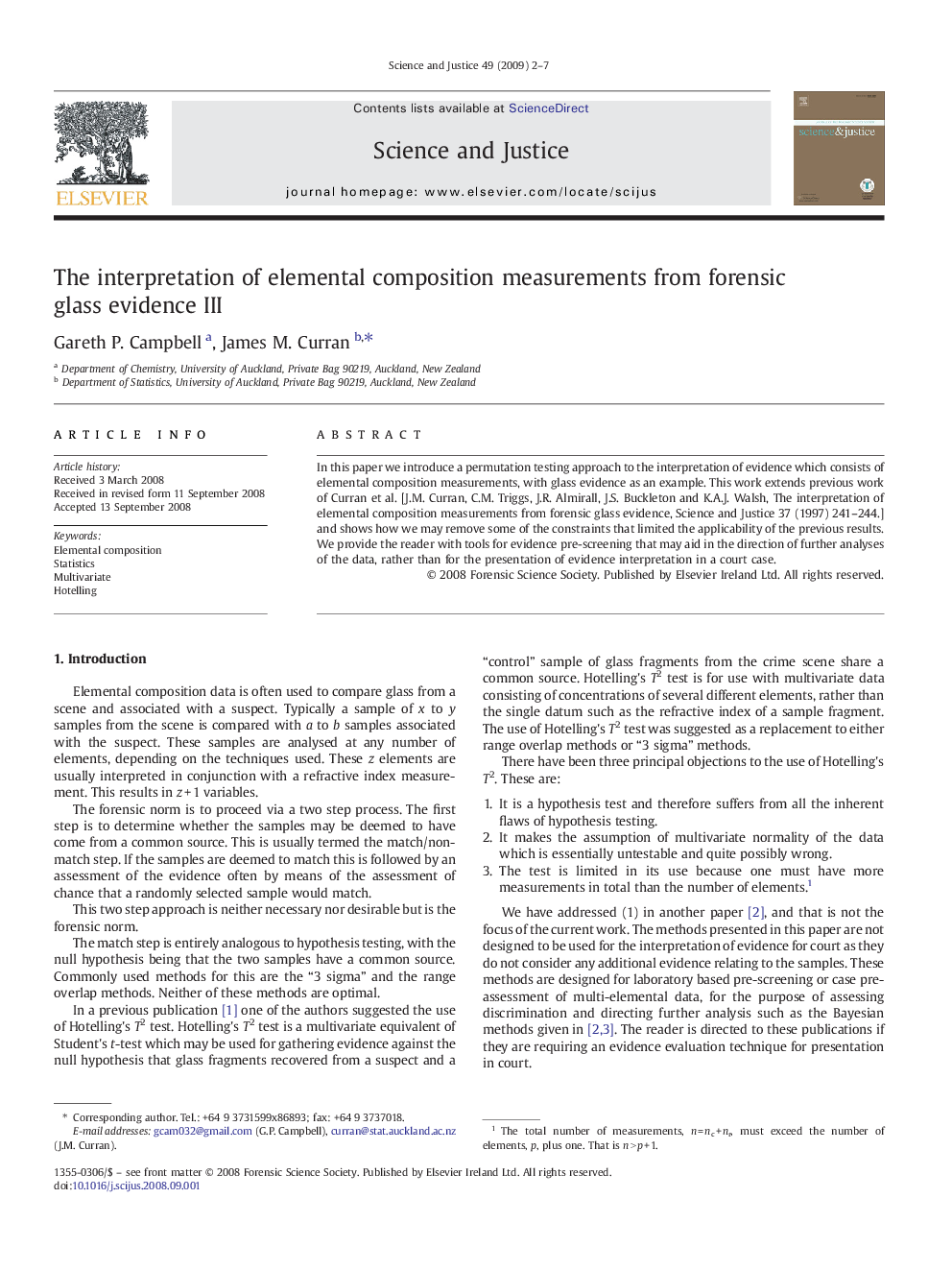| Article ID | Journal | Published Year | Pages | File Type |
|---|---|---|---|---|
| 107322 | Science & Justice | 2009 | 6 Pages |
Abstract
In this paper we introduce a permutation testing approach to the interpretation of evidence which consists of elemental composition measurements, with glass evidence as an example. This work extends previous work of Curran et al. [J.M. Curran, C.M. Triggs, J.R. Almirall, J.S. Buckleton and K.A.J. Walsh, The interpretation of elemental composition measurements from forensic glass evidence, Science and Justice 37 (1997) 241–244.] and shows how we may remove some of the constraints that limited the applicability of the previous results. We provide the reader with tools for evidence pre-screening that may aid in the direction of further analyses of the data, rather than for the presentation of evidence interpretation in a court case.
Related Topics
Physical Sciences and Engineering
Chemistry
Analytical Chemistry
Authors
Gareth P. Campbell, James M. Curran,
